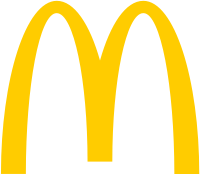In 1936, Zuse invented this type of computer?the first freely programmable computer
Post a photo of the 1944 Mark Computer.
In 1944, Aiken and Hopper designed the Mark Series of computers to be used for what?used by the US Navy for gunnery and ballistic calculations.
Post a photo of the UNIVAC Computer.
In 1951, Eckert and Mauchly designed the first commercial computer for whom? for the Census Bureau.
What does UNIVAC stand for?
universal Automatic Computer
In 1953, IBM enters the scene. What does IBM stand for?International Business Machines.
What is FORTRAN?The first successful high level programming language. FORTRAN: The IBA mathematical Formula Translating System.
Post a photo of the first mouse.
In 1964, how did Engelbart change the way computers worked?By making them more user-friendly tool.
What is the significance of ARPnet?
was the first internet , was developed to protect the flow of information between military installations by creating a network of geographically separated computers.
(Advaced Research Projects Agency Network.)
In 1971, Intel introduced this? Post a photo of it.
the first single chip microprocessor, the intel 4004.
In the same year, IBM introduced this? Post a photo of one.The first "memory disk" commonly called the "Floppy Disk" Because of its flexiblity.
In 1973, Metcalf and Xerox created this?The first ethernet computer network.
Altair
Apple I
Apple II
TRS-80
Commodore PET
In 1981, Bill Gates and Microsoft introduced this package? the HS-DOS computer operating system which was packages with the IBM PC
Post a photo of the Lisa computer.
In 1983, who introduced the Lisa computer?Xerox Corporation
What is GUI?Graphical user interface.
Post a photo of the computer mentioned below.
In 1984, a more affordable home computer was introduced. Name the computer and the company that marketed it?Apple macintosh computer, GUI
The commercial only ran one time. When?1984, during the super bowl.
response to the Apple GUI, Gates and Microsoft introduced this?the windows operating system
Two men are known for their development of the Apple I computer. Who are they?
N/A
When was the internet that we know, world wide web, developed and introduced?
N/A
Over the years, Apple has included "easter eggs" within their software. What is an "easter egg"?
N/A
Search for easter eggs in Photoshop and Illustrator. List a few in this post ... and try to find them in the applications.
N/A
Where do you think computers will take us in the next 10 years?
Probably a little further than we are now, I don't believe there will be flying cars of anything as most people think. It takes so much longer to develop something mind-blowing than ten years.




























